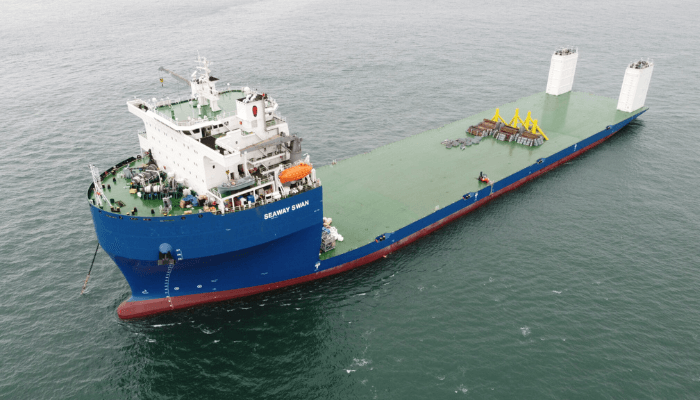UC San Diego’s Scripps Institution of Oceanography today announced that naval architecture and marine engineering company Glosten has been selected as the naval architect for the university’s new California coastal research vessel. The new vessel will feature a first-of-its-kind hydrogen-hybrid propulsion system.
Selected after participating in the university’s request for proposal process, Glosten will provide the preliminary design, contract design and detailed design for the research vessel to be operated by Scripps Oceanography.
“This vessel will be the first of its kind, and the selection of the naval architect is a major milestone for Scripps,” said Bruce Appelgate, associate director and head of ship operations at Scripps Oceanography. “Fundamentally, our ships have to be reliable and capable in order to support the innovative research our scientists conduct at sea. On top of that, the ship we envision needs to demonstrate that zero-emission power systems work effectively under demanding real-world conditions. It’s the job of the naval architect to provide the necessary engineering, design, and integration skills needed for this project to succeed on every level.”
California legislators last summer allocated $35 million toward the design and construction of this vessel, which will serve as a platform for education and research dedicated to understanding the California coast and climate change impacts to the coastal ecosystem.
“I am proud to see Scripps Institution of Oceanography arrive at the critical milestone of selecting a naval architect for this one-of-a-kind hydrogen-hybrid research vessel,” said Senate President pro Tempore Toni G. Atkins. “Scripps and California continue to set the global standard for developing innovative solutions to address our most pressing environmental challenges. This vessel will play a critical role in supporting policy decisions to protect our state’s precious coastal environment from climate change impacts, while demonstrating hydrogen’s critical role in California’s carbon-free future.”
As a student-centered, research-focused public university, seagoing experiences are a cornerstone of educational programs at UC San Diego. This new vessel will continue the university’s educational mission to train the next generation of scientists, leaders and policymakers. It is envisioned that the vessel will carry up to 45 students and teachers to sea on day trips, improving the university’s capacity for experiential learning at sea. The new vessel will replace research vessel Robert Gordon Sproul, which has served thousands of University of California students in its 42 years of service but is nearing completion of its service life.
“Scripps Institution of Oceanography’s hydrogen-hybrid coastal research vessel is a significant demonstration of California’s commitment to fighting climate change, decarbonizing our blue economy, and improving air quality for port-adjacent disadvantaged communities,” said Liane Randolph, chair of the California Air Resources Board (CARB). “The selection of a naval architect is an important step in bringing this innovative project to reality.”
This new vessel will feature an innovative hybrid propulsion system that integrates hydrogen fuel cells alongside a conventional diesel-electric power plant, enabling zero-emission operations, in line with the University of California’s Carbon Neutrality Initiative, which targets carbon neutrality by 2025. The design is scaled so the ship will be able to operate 75% of its missions entirely using a non-fossil fuel—hydrogen—with only pure water and electricity as reaction products. For longer missions, extra power will be provided by clean-running modern diesel generators.
The proposed 125-foot vessel will be equipped with instruments and sensing systems, including acoustic Doppler current profilers, seafloor mapping systems, midwater fishery imaging systems, biological and geological sampling systems, and support for airborne drone operations. These capabilities, along with state-of-the-art laboratories, will enable multidisciplinary research, advancing our understanding of the physical and biological processes active in California’s coastal oceans. This new vessel will be dedicated to California research missions, with the capability to study issues vital to the California economy such as the health of marine fisheries, harmful algal blooms, severe El Niño storms, atmospheric rivers, sea-level rise, ocean acidification, and oxygen depletion zones.
Scripps Oceanography has worked with Glosten previously, initially more than 60 years ago on the design of Research Platform Floating Instrument Platform known as FLIP. Glosten was also involved in the midlife refit of Roger Revelle, a $60 million renovation that advanced the scientific capability and service life of Scripps’s largest ship.
The anticipated schedule for design and construction includes one year to complete the basic design. Following U.S. Coast Guard approval of the design, the university will select the shipyard where the design will be constructed. Construction and detail design will likely take an additional three years.
When completed, it will join the fleet of vessels managed by Scripps including the Navy-owned research vessels Sally Ride and Roger Revelle, which conduct global oceanographic research, and the Bob and Betty Beyster, a nearshore scientific workboat. All research vessels are stationed and maintained at the university’s Nimitz Marine Facility in Point Loma.
Source: https://www.marinelink.com/news/glosten-tapped-design-scripps-new-498454






